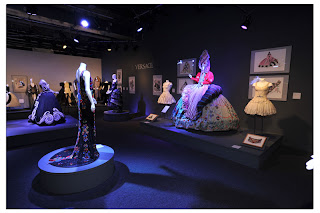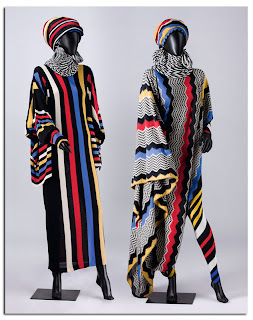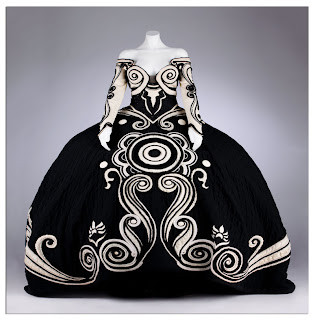
Want to be awed?
Need inspiration?
Just simply love couture fashion?
If so, I need to tell you about an amazing fashion exhibit in the Los Angeles area which has a limited engagement (four weeks). The name of the exhibit is Theatre in Fashion (Il Teatro alla Moda).
I first saw this exhibit in Milan last summer with my Verona Retreat group. We were all in awe as we walked through the galleries, and were pleased to hear that the garments were coming to Los Angeles area in the Fall.
Theatre in Fashion features 80 garments designed by top designers such as Armani, Capucci, Fendi, Marras, Missoni, Ungaro, Valentino, and Versace. These amazing structures were created for opera, drama, and ballet. Therefore, they are stage pieces and utterly fantastic. Sponsored by the Wallis Annenberg Center, the exhibition is located on Beverly Drive in Beverly Hills. As you tour the array of color, structure and creativity, you will walk through several galleries, laid out by designer. In numerous cases, you can see the concept sketch, and then the final garment.
I think what amazed me most is the fantastic architectural design that occurs when a garment is designed for the stage. I can guarantee you that you will not be disappointed in what you see. Every fashion student should make a point of seeing this show, sketch book in hand, to learn from the masters.
Do hurry though, as the exhibit ends on November 13th, 2011. It is a four-week engagement.
Theatre in Fashion (hosted by Wallis Annenberg Center for the Performing Arts)
http://www.annenbergbh.com
Exhibit is located in a temporary space at
253 North Beverly Dr.
Beverly Hills, CA 90210
Hours: Wed – Friday, noon -7 p.m.
Saturday/Sunday 11 a.m. – 6 p.m.
Tickets are $10 per person, Thursday – Sunday;
Children under 12 and students with ID are free.
Admission on Wednesday is free.
Parking is free for two hours in a nearby lot.
And now.. to tempt you...
Missoni Costumes for the 1990 World Cup in Italy

Capriccio by Robert Capucci

Capriccio by Gianni Versace

photos provided with permission of the Wallis Annenberg Center for the Performing Arts





















































